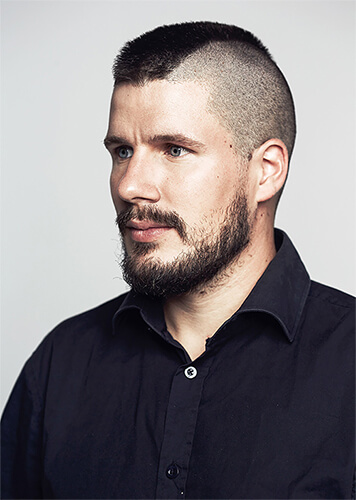Self-taught photographer, Rémi Chapeaublanc was destined for a scientific career in bioinformatics. He continued to use the Cartesian approach from this training adding a sensitive, people-centred dimension the day he decided to be a photographer.
For his series Gods & Beasts (2011), he crossed Europe and Asia reaching Mongolia. Inside the yurt or outside, at nightfall, he produced portraits of Kazakh nomadic herders and their animals without ever resorting to retouching, despite working in digital.
For this most recent series The Last Tsaatan, Rémi Chapeaublanc has chosen to portray a nomadic people again: the Tsaatans, sharing their everyday life, happiness and desire to transmit their skills.
About Gods & Beasts
A solitary voyage through Europe and Asia, led Rémi Chapeaublanc to Mongolia. The discovery of this country, where Man has not yet desecrated Nature, fed his thinking to create the photographic series Gods & Beasts.
In these lands, men and animals depend on ancestral ties that are both sacred and necessary. It is an archaic and visceral relationship in which equivocal domination games are put into questioning. Which are the gods, and which are the beasts? Or rather to whom are they the Gods and for whom are they Beasts?
Gods & Beasts consists of raw portraits. While there is an ambiguous hierarchy between men and animals, this series - created outside of a studio, in the original environment - overcomes this cultural order. This work of bringing into the light these relationships - in an almost ceremonial manner - places these Gods and Beasts for once on equal footing. The viewer is thus left the sole judge of the boundary between animal and divine.
About The Last Tsaatan
What will become of the Tsaatan people?
In 2011, Rémi Chapeaublanc set off to find the Tsaatan people, nomadic reindeer herders, straddling the border of Northern Mongolia. Amounting to no more than 282 people in the world, this tribe's way of life has been disrupted by the transformation of its ancestral land into a national park. Hunting, passage and woodcutting are now prohibited there; total bans contradict their centuries-old traditions.
Since his first encounter, Rémi Chapeaublanc has continued to go back there, sharing their customs and everyday life for several weeks at a time. With this new photo series, he raises concerns about the future of the Tsaatan people, dealing with the tide of modernity in Mongolia, each year distancing them a little further from their traditional way of life. If the tribe accepts and even laughs at technological progress, it flatly rejects urban life, and opinion is divided regarding tourism. Their life in the Taiga represented absolute freedom. Now it is complex and in particular threatened.
Both humane and engaged, this series of photographs is nevertheless graphic with a particularly aesthetical and simple approach. This medium format work, produced traditionally with black and white film and then digitally enhanced, demonstrates the artist's desire to adapt their anachronistic way of life. Rémi Chapeaublanc, who befriended a number of them, now takes the public to task asking: what will be left of the Tsaatan people?
